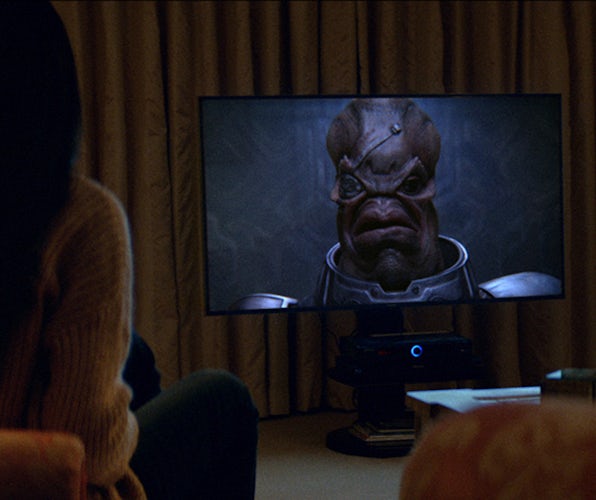Getting to the business case for advertising
After a decade of change in advertising, a new study commissioned by Thinkbox tries to quantify the business case for advertising and which medium is the lowest risk for investment.

The advertising industry has undergone rapid change over the past decade as the emergence of new forms of advertising in digital and changes in consumer behaviour have led to growing competition for investment.
That has led to huge debate around how effective advertising now is, as well as which media should be attracting marketers’ attention and budgets. The likes of Google and Facebook have won over many with their plethora of data and claims of reach and targeting. But there are still many cautioning the industry not to forget about what really matters in marketing – driving profitable growth.
Into this complicated scene comes Thinkbox. As the trade body for TV advertising it clearly has a vested interest in proving that TV still works. But like with most of its research, the latest has been independently carried out by both Ebiquity and Gain Theory in an attempt to work out the business case for advertising.
The study analyses more than 2,000 advertising campaigns across 11 categories, looking at the impact on short-term profit (within three to six months of a campaign finishing). It then combines these with results for profits generated over the longer term (up to three years). The aim was to determine total profit return.
The IPA has been doing something similar with its database of entries to its Effectiveness Awards, but where this differs is that it is across all campaigns, not just those judged the best.
[Digital data] is like methamphetamine; the risk is that is the only conversation [the rest of the business] wants to have.
Mark Evans, Direct Line Group
The research finds that all forms of advertising create profit to varying degrees, both in the long term and the short term. On average, advertising creates a total profit return on investment (ROI) of £3.24 per £1 spend over three years.
Matt Hill, Thinkbox’s research and planning director, speaking at an event last week (16 November) to unveil the study, said: “[There has been] a worrying and disturbing picture that advertising is becoming less effective. There are numerous reasons behind this: CMO tenure, the high incentives for MDs and executives based on short-term goals, over-reliance on attribution modelling, the rising role of procurement teams, and the growth in direct response advertising at the expense of brand building.
“This is a depressing and worrying backdrop. So we wanted to show just how effective and powerful advertising can be.”
Which media works?
On top of this, the research also looks to find the ad formats that are the most likely to result in profit return. 
In good news for Thinkbox, the study finds TV ads are responsible for 71% of total advertising-generated profit with an average profit ROI over three years of £4.20 for every £1 spent (see chart below), followed by print on 18%, online video on 4%, out-of-home and radio both on 3% and online display on 1%. Social media could not be measured because there is not enough data points, while formats such as search and shopper marketing are not included because they are “demand-harvesting rather than demand-generating”.
The study also finds TV is the “safest investment” in the short term, generating 62% of short-term profit at the highest efficiency (see chart below). It comes ahead of print (22%), radio and online video (5%), outdoor (3%) and online display (2%). It is almost as efficient at both low levels of spend and when advertisers are looking to scale.

Plus it has the largest long-term multiplier – at nearly 2.5 – with online video coming in second, outdoor third, print fourth, radio fifth and online display last with a score of just one and the research finding “no examples” of pay-per-click driving long-term response.
Direct Line Group marketing director Mark Evans welcomes the study, in particular that “two competing agencies reach conclusions pointing at the same place”.
“I have two sentiments really. It is entirely unsurprising. We find that TV is in rude health. When we doubled down on TV, as we did with The Fixer campaign, we saw effectiveness increase by 53%,” he explained.
“I also feel quite vindicated. Specifically in terms of online display. We came out of online display in 2012 and honestly I laugh myself silly when I hear unnamed advertisers talk about how there was no sales impact after they stopped running $140m of digital display. I mean ‘What were you doing?’ is an obvious question.”
READ MORE: Will other brands follow P&G’s lead and cut digital ad spend?
The issue now is to ensure that the rest of the company understands the business case. Evans pointed to recent research which finds that while 80% of CEOs trust their CFO, just 10% trust their CMO.
“There is a constant battle to chip away at the perception in the boardroom of marketing as a cost to the business not an investment. That is not a war that is won with one battle,” he added.
Direct Line has done this by having a “crack marketing effectiveness team”, an infrastructure set up to really understand its marketing activity and what works. But key, said Evans, is an effectiveness mindset.
[There has been] a worrying and disturbing picture that advertising is becoming less effective.
Matt Hill, Thinkbox
“[The infrastructure] is the bread and butter. But really key to this is the mindsets and culture you put around it to create that commercial acumen within the marketing team so you can stand toe-to-toe with your finance counterparts and really get your message across,” he added.
Yet even with this setup, Evans said the huge amount of data provided by digital advertising has been a “friend” because it has made the rest of the company realise that marketing investment can be measured. However, Evans warned marketers against an over-reliance on digital data at the expense of better effectiveness measures.
“[Digital data] is like methamphetamine; the risk is that is the only conversation [the rest of the business] wants to have. What we have been very successful at doing at Direct Line is saying that all that digital data and thoroughness comes from the same marketing effectiveness team that are bringing these longer-term leanings,” he said.







